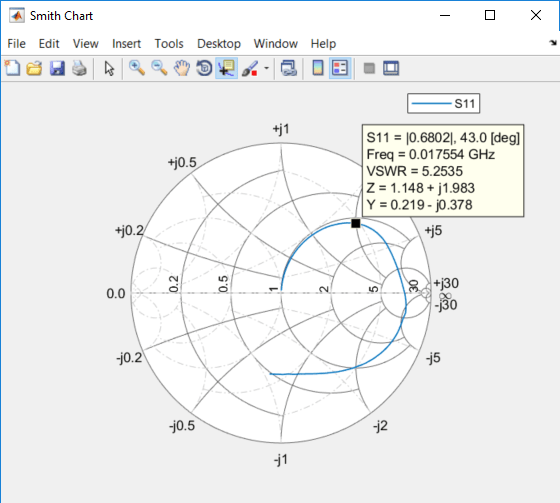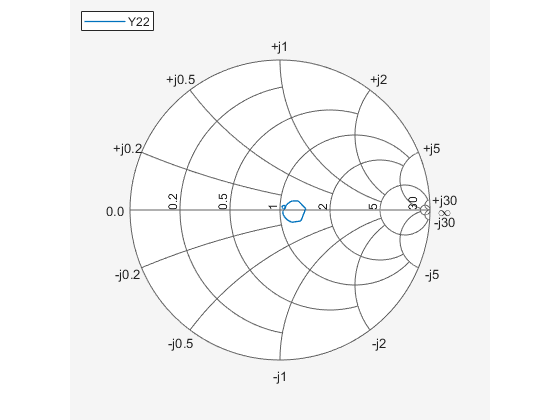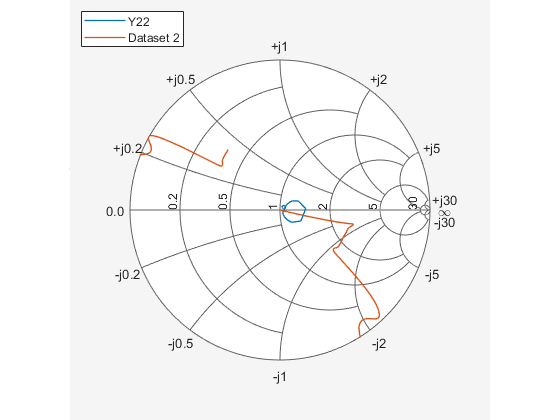smithplot
Plot measurement data on Smith chart
Syntax
Description
smithplot( creates a Smith chart
based on the input data specified in data)data.
Note
A Smith chart is commonly used to display the relationship between a reflection coefficient, typically S11 or S22, and a normalized impedance.
The
smithplotfunction replaces thesmithchartfunction. (since R2023b)
smithplot(ax,___) creates a Smith chart with a
user defined axes handle, ax, instead of the current axes handle.
Axes handles are not supported for network parameter objects. This parameter can be
used with either of the two previous syntaxes.
smithplot( plots the
(i,j)th parameter of
hnet,i,j)hnet. hnet can be a network parameter, an
rfckt, an rfdata,or an nport object.
smithplot(
plots multiple parameters (i1,
j1,
i2,
j2, …,
in,
jn) of hnet,[i1,j1;i2,j2;....,in,jn])hnet.
hnet can be a network parameter, an rfckt, an rfdata, or an
nport object.
smithplot( plots the
reflection coefficient of an rfbudgetobj,i,i)rfbudget object.
Note
For rfbudget objects, smith plot is restricted to
reflection coefficients.
s = smithplot(___)
s = smithplot('gco')p was not returned or retained.
smithplot(___,Name,Value) creates a Smith chart
with additional properties specified by one or more name-value pair arguments.
Name is the property name and Value is the
corresponding property value. You can specify several name-value pair arguments in
any order as Name1, Value1,
..., NameN, ValueN.
Properties not specified retain their default values.
For list of properties, see SmithPlot Properties.
Note
The property 'Parent' might be used to control the
location where Smith chart gets plotted. Target can be figure, UI figure, UI
panel, etc.
Examples
Input Arguments
Output Arguments
Tips
To list all the property
Name,Valuepairs insmithplot, usedetails(s). You can use the properties to extract any data from the Smith chart. For example,s = smithplot(data,'GridType','Z')displays the impedance data grid from the Smith chart.For a list of properties of
smithplot, see SmithPlot Properties.You can use the
smithplotinteractive menu to change the line and marker styles.








